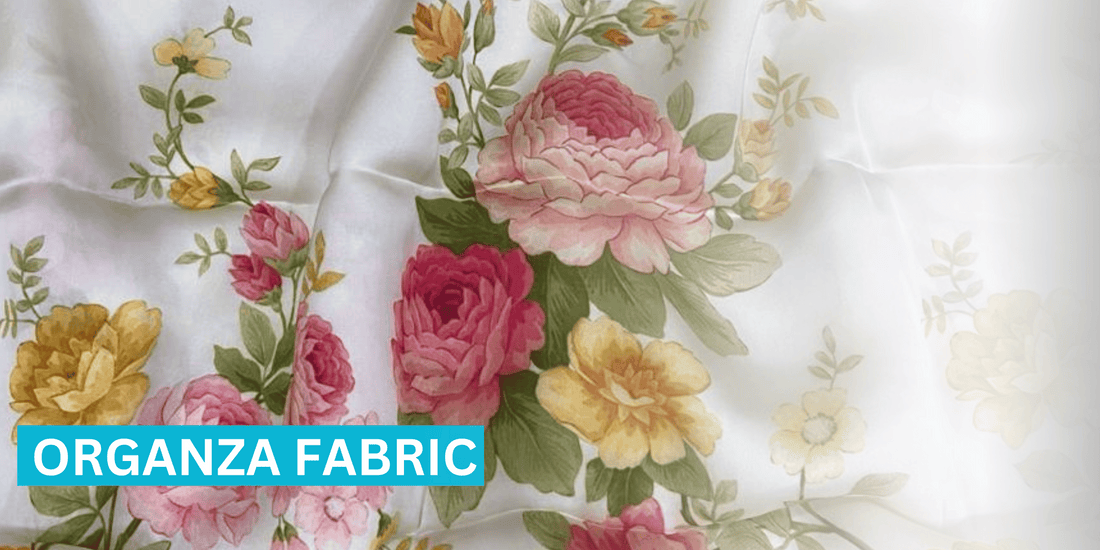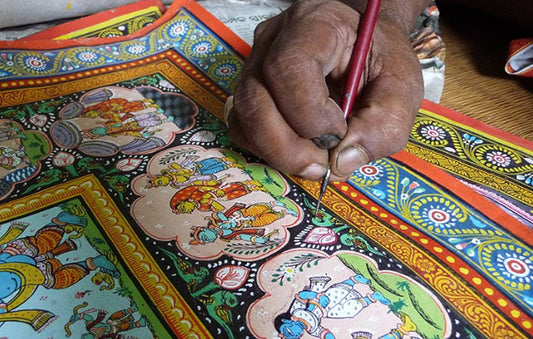In the realm of fashion, certain fabrics possess an unmatched ability to captivate with their sheer beauty and delicate nature. One such fabric that has garnered attention for its ethereal charm and versatility is organza. With its translucent appearance, lightweight texture, and graceful drape, organza has become a beloved choice among designers and fashion enthusiasts. In this blog, we will explore the fascinating world of organza fabric, delving into its origins, unique properties, and how it can add a touch of sheer elegance to your wardrobe.
Origins and Composition:
Organza fabric originated centuries ago, tracing its roots to the luxurious silk trade in China. Historically, it was made exclusively from silk fibers, earning it a reputation as a fabric reserved for the elite. However, advancements in textile manufacturing have led to the production of organza fabrics using synthetic fibers like polyester and nylon, making it more accessible to a wider range of consumers. Regardless of the composition, organza retains its signature characteristics of sheer transparency and lightweight texture.
Sheer Beauty and Delicate Transparency:
The most enchanting quality of organza fabric lies in its sheer beauty and delicate transparency. The fabric features a fine, open weave that allows light to pass through, creating an ethereal and luminous effect. Whether used as an overlay, sleeves, or panels, organza adds a touch of enchantment and mystery to any garment. It can be a wonderful choice for wedding dresses, evening gowns, or even delicate blouses, where its translucency can reveal glimpses of skin, adding a subtle allure.
Graceful Drape and Volume:
One of the notable attributes of organza fabric is its graceful drape. Despite its lightweight nature, it possesses a certain stiffness that gives it structure and creates a voluminous effect. When used in full skirts or layered designs, organza adds an element of drama and elegance, lending a sense of movement and flow to the garment. Its ability to hold its shape makes it ideal for creating flared or A-line silhouettes, allowing for stunning and memorable fashion statements.
Versatility and Styling Options:
Organza fabric offers a wide range of styling possibilities due to its versatility. It can be used as an accent fabric, adding delicate details such as ruffles, trims, or sleeves to a design. When combined with other materials like lace or satin, organza can create beautiful textural contrasts, adding depth and visual interest to the overall look. Additionally, organza is often used as an overlay fabric, adding a layer of sophistication to dresses, skirts, or blouses. Its lightweight and translucent nature make it an excellent choice for creating elegant, romantic, or whimsical styles.
Embellishments and Embroidery:
The sheer surface of organza fabric provides an excellent canvas for embellishments and intricate embroidery. Delicate beading, sequins, or floral appliques can be meticulously sewn onto the fabric, creating stunning visual effects. Embroidery work on organza fabric can range from intricate and traditional to modern and contemporary, allowing for endless creative possibilities. These embellishments can transform a simple garment into a work of art, making it a popular choice for special occasions or high-fashion pieces.
Care and Maintenance:
As with any delicate fabric, organza requires proper care and maintenance to ensure its longevity. It is generally recommended to hand wash organza garments in cold water with mild detergent and avoid excessive wringing or twisting. Air drying or gently pressing with a cool iron on low heat is preferable to maintain the fabric's integrity. Always refer to the care instructions provided by the manufacturer for specific guidance.
Conclusion:
Organza fabric has an undeniable allure that sets it apart from other fabrics in the fashion world.
Q/A
What fabric is organza?
Organza is a lightweight and sheer fabric that is commonly made from silk, although it can also be produced using synthetic fibers such as polyester or nylon. Historically, organza was exclusively crafted from silk fibers, which gave it a luxurious reputation and made it a fabric associated with high-end fashion and special occasions. However, modern manufacturing techniques have made it possible to create organza using synthetic materials, making it more accessible and affordable to a wider range of consumers. The choice of silk or synthetic fibers affects the fabric's texture, sheen, and overall characteristics, but both versions of organza maintain the signature sheer and translucent qualities that define the fabric.
What is the difference between organza and chiffon?
lightweight and breathable nature. The fabric's sheer and translucent quality allows air to circulate, making it comfortable to wear in hot and humid conditions. Organza's lightweight texture also provides a breezy feel, which is ideal for warmer temperatures. In summer, organza can be used in a variety of garments, such as light blouses, dresses, skirts, or overlays, allowing for a delicate and ethereal look. It offers a stylish way to stay cool while adding a touch of elegance to your summer wardrobe. However, it's worth noting that organza fabric can also be incorporated into winter ensembles when used strategically. Layering organza with warmer fabrics like wool or velvet can create a unique and textured look. Organza can be utilised as an overlay on long-sleeved tops or dresses, adding dimension and a touch of sophistication to winter outfits. It can also be used for lightweight scarves or as an accent fabric in accessories during the colder months. Ultimately, while organza is traditionally associated with warmer seasons, its versatility allows it to be used creatively throughout the year, depending on how it is incorporated into the overall design and layered with other fabrics.
Is organza a silk?
Organza can be made from silk, but it can also be made from synthetic fibers such as polyester or nylon. Historically, organza fabric was exclusively crafted from silk fibers, which gave it a luxurious reputation and made it a fabric associated with high-end fashion and special occasions. Silk organza is highly regarded for its lustrous sheen, delicate transparency, and luxurious feel.
However, advancements in textile manufacturing have made it possible to produce organza using synthetic fibres . Synthetic organza, made from polyester or nylon, offers a more affordable and accessible option without compromising the sheer and lightweight characteristics of the fabric. Synthetic organza can closely mimic the appearance and drape of silk organza, making it a popular choice for those seeking a budget-friendly alternative.
Whether made from silk or synthetic fibers, organza retains its signature sheer and translucent quality, adding a touch of elegance and sophistication to garments and designs. The choice of silk or synthetic organza depends on personal preference, budget considerations, and the desired aesthetic and performance of the fabric.



